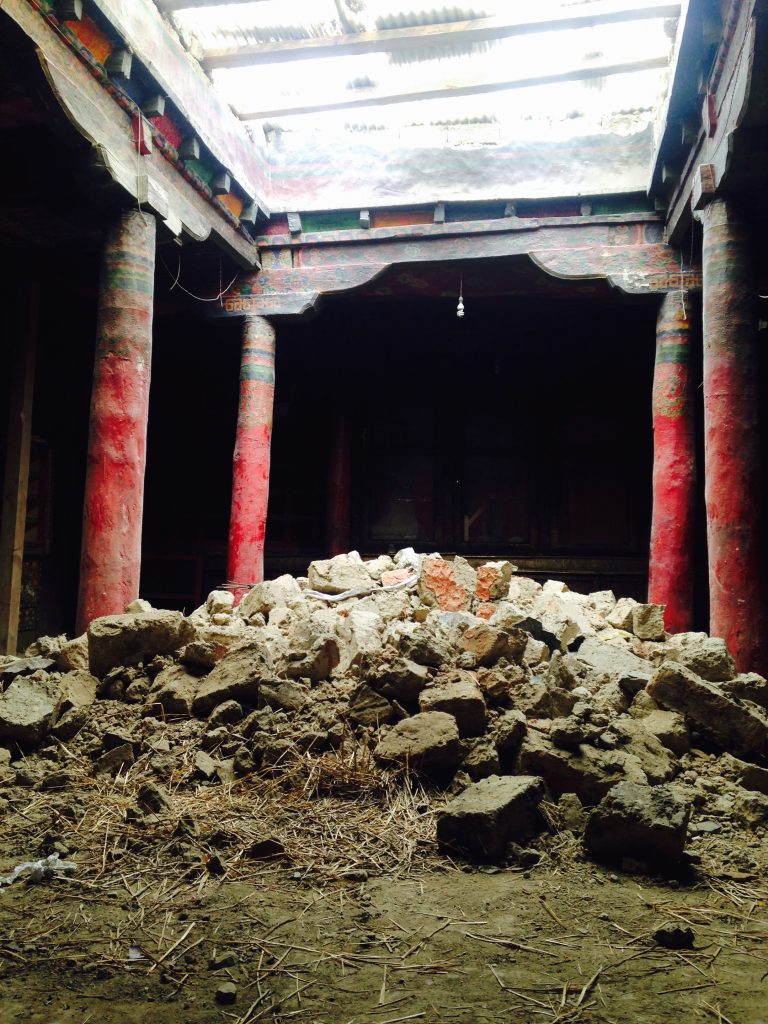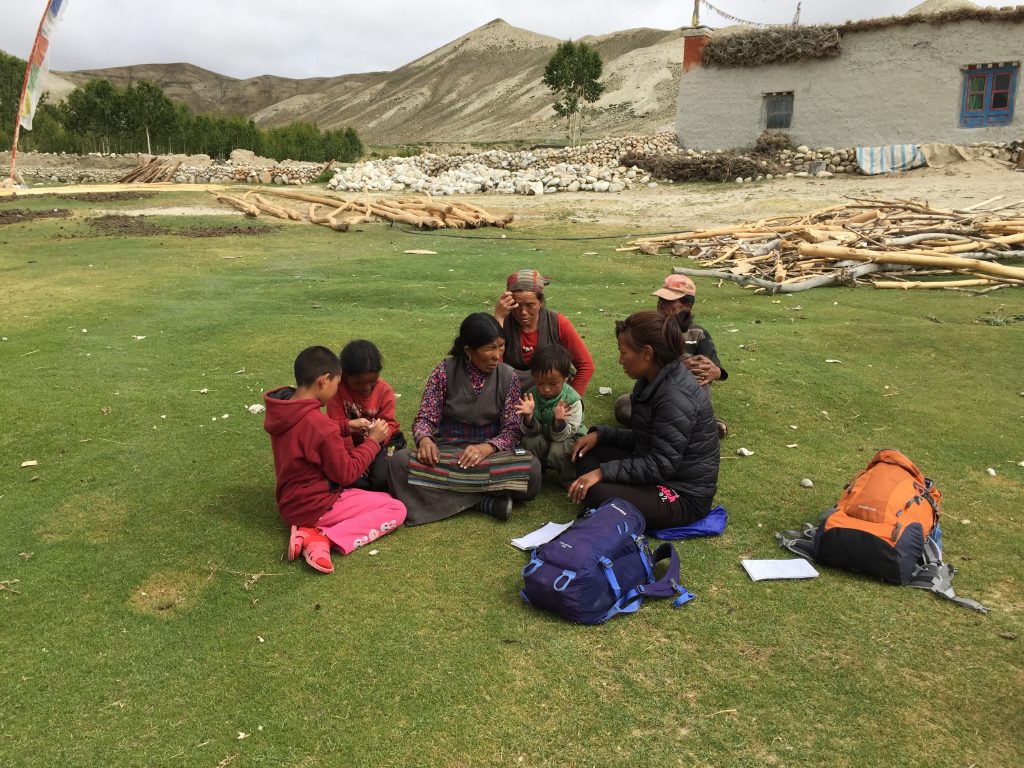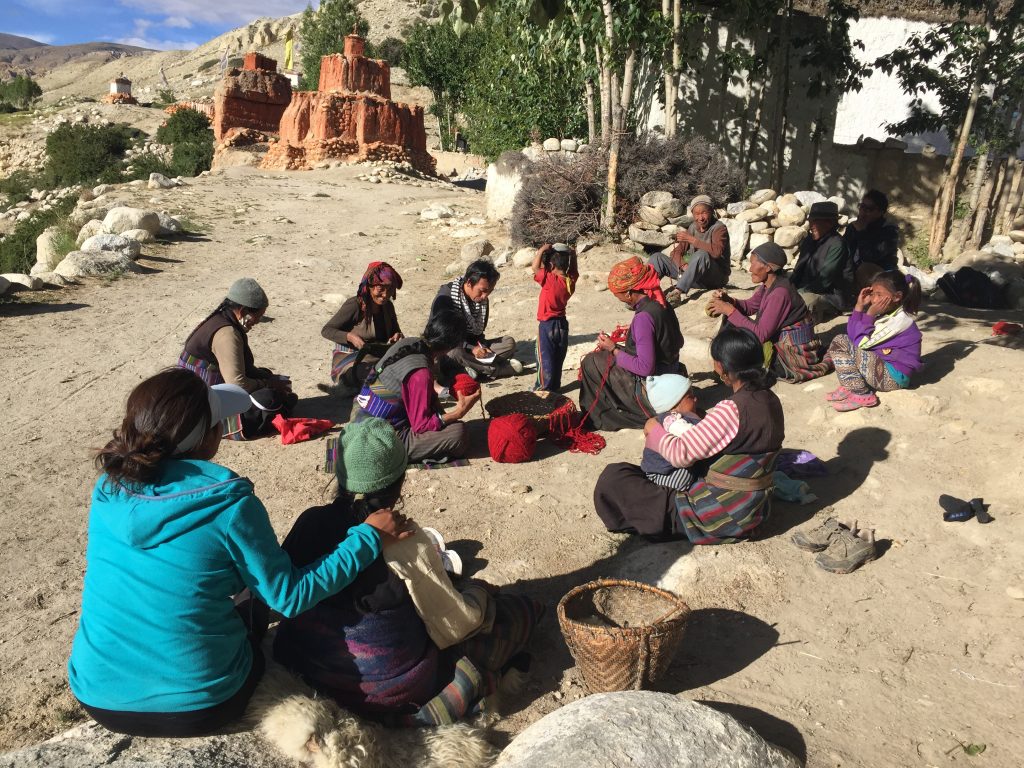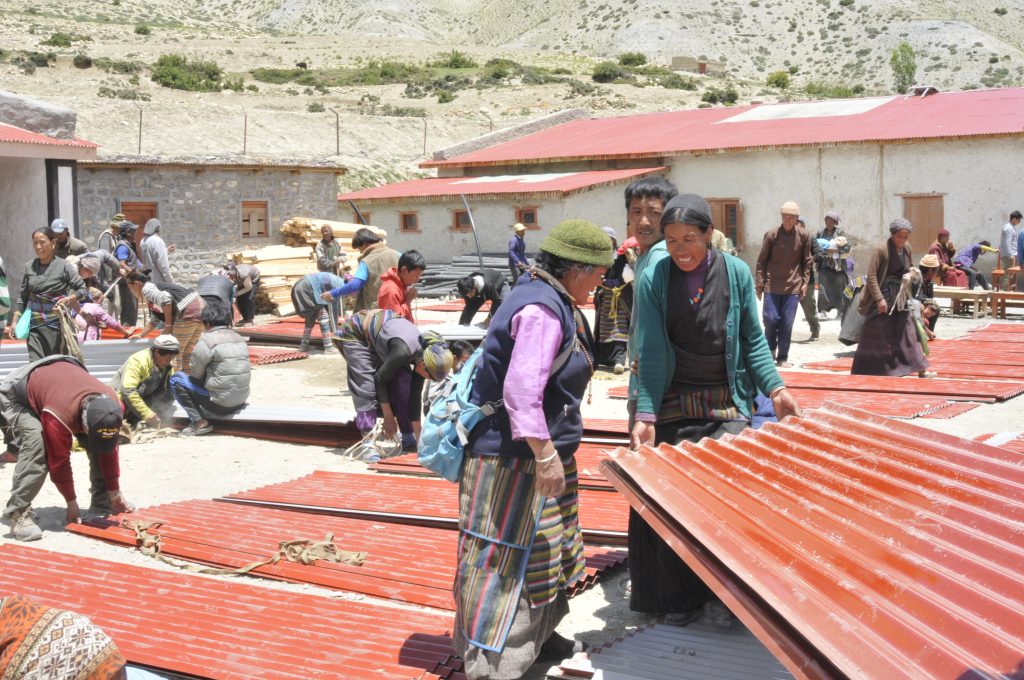Shattered Homes and Hard Choices in Post-Quake Nepal

The days following Nepal’s devastating, 7.8 magnitude earthquake on April 25, 2015, passed for me in a blur of sleeplessness and checking Facebook. I ached to be there. Yet I also realized that I could be of more help from a distance, raising awareness and funds for affected communities. Media images tumbled in of familiar landmarks now leveled and hundreds of thousands of Nepalis wracked by grief and shock. The internet became a strange safety net, catching those of us tied to Nepal as we fell into new forms of connection with each other. I was relieved to see people I knew marked “safe” on social media and to participate remotely in efforts to source tarps and tents, direct medical aid, and honor the dead. Fortunately, most people I knew were okay, though their homes and their heart-minds (the seat of their emotions) were not.
By the time the second major quake hit—with a magnitude of 7.3—on May 12, I still had not heard from Yangjin, one of my long-term research assistants and a native of the Mustang District—a place I’ve done fieldwork since my undergraduate days. Other friends from Mustang told me that she and her family were fine but that their home in the hamlet of Nyiphuk had suffered significant damage. I pictured that house: a towering edifice of rammed earth bricks, poplar beams, and whitewash. Several hundred years old, the home abuts ochre cliffs dotted with caves in which some of the Himalaya’s earliest inhabitants once lived. In my mind’s eye, I could see Yangjin’s mother leaning out from a carved wooden window, smiling and calling us to tea. I recalled Yangjin’s descriptions of a childhood spent in her home village—that is, until she was sent away to boarding school, like so many of the young people of her generation. The memories embodied by this house moved me, even though they were not mine to claim.
Objects, including houses, are more than material. As I contemplated the destruction of so many Nepali homes, temples, monasteries, and social institutions, I thought about how, half a world away, in Maori communities of Aotearoa (New Zealand), the marae is not simply a community meetinghouse. It is also a person, an ancestor: central pillar as spine, roof beams as ribs. In culturally Tibetan contexts such as in Mustang, the ritual act of imbuing a shrine room, a statue, or even a valley with spiritual power links people to gyü, or lineage. Yangjin’s family home was such a place.
The month of May passed, and I still hadn’t heard from Yangjin.
Without knowing its fate, I considered the vital energy and history invested in her house: her grandfather’s years of medical practice within those walls; community gatherings that her father, a local politician who had married into this household, had orchestrated beside the hearth; the melody of horse bells worn by Tibetan ponies hitched to posts in the inner courtyard. Would this home need to be destroyed?
It was mid-June before I got word from Yangjin. By this time, I had joined forces with fellow scholars of Nepal—linguist Kristine Hildebrandt of Southern Illinois University, Geoff Childs, an anthropologist and demographer from Washington University in St. Louis, and another linguist, Mark Donohue, from the Australian National University—in an effort to document the effects of the earthquakes in communities we knew well. [1] [1] Research for this article was made possible by a National Science Foundation RAPID grant (no. 1547377). We realized that without immediate action to record survivors’ experiences and voices, their nuanced stories would be amalgamated into more generalized public narratives. So often these are homogenized in the quest to distill the facets of tragedy and faces of resilience into digestible sound bites and iconic photos. We decided to explore the rarely seen sides of disaster response through an interdisciplinary project, which we were able to fund through the National Science Foundation.
Working across three affected mountain districts in central Nepal (Mustang, Manang, and Gorkha) representing diverse religious traditions, cultural practices, and languages, we began asking survivors and responders what they knew about earthquakes based on their lifelong cultural and environmental experiences. How did they explain these events, in their own words? How did they view their world through these earthquakes and the aftermath, particularly in terms of cause and consequence?
Even as she and her family were wrestling with questions about what to do with their own house, Yangjin joined our collective of Western academics, Nepali linguists, and local researchers. This collaborative research endeavor has hinged on young people like Yangjin whose families and communities were directly impacted. Over the past nine months, teams of community researchers have gathered hundreds of stories told in local dialects and endangered languages. Many of these accounts touch upon not only the emotional and economic impact of these events but also on efforts to make sense of the earthquakes in cultural, religious, and moral terms. (As part of the project, we are building a public, open-access archive.)
We have learned many things from these stories. Damage, said one local shopkeeper, sitting atop a pile of debris that was once his livelihood, means “there is no one here, so my business is lost.” Many people spoke of scientific explanations for the earthquakes, referring to tectonic plates and seismic pressure, alongside, and sometimes overlapping with, ethical and ecological explanations. “The earthquakes are coming because we are not taking enough care of the world,” offered a middle-aged mother. “It is like children not taking care of their parents.”
Some people spoke of the current era as the kaliyug, an age of greed and disconnection, of karmic consequences for environmental and other imbalances. Still others understood the earthquakes as the work of a giant animal—an elephant, a tortoise, a white ox—on whose back the world balances. When the animal shakes, sometimes for reasons that can be connected to human behavior, the earth trembles.
We have heard stories about the pain and vulnerability of tearing down and shoring up domestic life. In many cases, houses had to be turned inside out. Nang gi nor, or private wealth—such as turquoise and coral necklaces, Buddhist statues, and religious texts—came under public scrutiny as people lived in tents. They were anxious about both theft and jealousy, even as they worried about paying for reconstruction and surviving the winter. Such concerns, coupled with incessant aftershocks, meant this to one villager: “We did not have fear like this before. Now it has become fear always.”
Nature’s hand at times deals a clean sweep of devastation. But more often than not we are left with material fragments, which, like memory and grief, require tending—beams to salvage, mold to bleach from walls. But to intentionally destroy what is left of a home is to acknowledge an irreconcilable loss and to submit to the possibility that rebuilding might never happen. We saw this after Hurricane Katrina. For millions of Nepalis, this reality is tied to resources—money, materials, labor—beyond reach. For others, impossibility is augured by the land itself: this settlement is no longer safe due to landslides; that valley is at risk of being flooded by a glacial lake outburst.
In addition, as was true on the Gulf Coast, the social aspects of disasters, such as the politics of disaster capitalism, are complicated. The Nepali government’s National Reconstruction Authority has been extremely slow to respond despite the more than US$4 billion in pledged aid. A five-month blockade of the Indian border, which has now been lifted, emerging from political discontent over Nepal’s new constitution, caused further suffering this winter—severe shortages of fuel, cooking gas, and essential medicines. It also led to inflation in the cost of building supplies. Not only do negligence and social conflicts impact those involved in an earthquake, but man-made problems—such as the social problems engendered by political-economic blockades as well as a lack of building-code enforcement or warning systems—underlie much of the disaster caused by “natural” events. As leading Nepali journalist Kunda Dixit has reiterated, “Earthquakes do not kill people—badly built buildings do.”
In the early days after the first earthquake, it was difficult to imagine mustering the physical and emotional effort that would be required to actively dismantle standing but unsafe structures. Destruction had been so complete in some places. Consider the crumbled stump that remained of Dharahara Tower in Kathmandu or the village of Langtang, erased by an avalanche whose force was half that of an atomic bomb. Or visualize Barpak, near the epicenter in the Gorkha District, which looked more like a giant game of pickup sticks than 1,200 ruined homes. But soon enough, people began to realize—to feel—the wounds of demolition. Once-intimate, safe spaces became minefields of splintered beams, deadly rocks, and spears of rusty rebar. Most people used their bare hands, not only to dig out from collapsed structures but also to sift through what remained of their belongings and salvage what could be reused.
In Mustang, people reported some instant, dramatic damage. But it was the slow-motion destruction that caused the greatest concern. Hours and days after the quakes, walls kept separating from roofs, beams yawned apart from bricks, and cracks snaked the length of rooms. Although it was not immediately apparent, many of these places were hazardous; aftershocks drove this message home. As weeks passed, news came in from the two most impacted villages in Mustang: in one, 64 homes would need to be torn down and rebuilt, and in the other, 22 homes. Schools, monasteries, and cultural monuments stood but in terrifyingly precarious states.
In response to local needs, people from near and far sent tin, requisitioned timber, and contributed cash, shovels, and protective gear—tools needed to tear down structures in order to rebuild them. Nongovernmental organizations played key roles in this process, but so did young people from the districts in our research area. Many of them had left their villages to pursue an education in urban areas, but they have become re-engaged in their communities through this crisis. By the onset of winter, many homes in the communities where we are conducting research had been rebuilt or repaired—without any government assistance. As many people said to us when we asked if they would seek state support, “Why wait for help when you know it won’t come?”
In late September 2015, I met the Mustang research team in Kathmandu. We began to sift through the more than 200 interviews they had collected. Yangjin and I spoke about her home, and her family’s decision not to tear it down. “The most damage was in the chökhang,” Yangjin explained, referencing the shrine room. “We feel it is not safe, but we also know that if we destroy this place we cannot get it back. We can replace the furniture but we cannot replace all of the religious work, the merit and virtuous activity. … If we were to tear it down and rebuild, it would be like the feeling is not enough.” House but not home, I scribbled in my notebook. Of course, they had the privilege of making that choice.
Still, this choice portends an uncertain future. History and science suggest that last spring’s 7.8 magnitude earthquake was not the “big one” but simply a harbinger of what’s to come as Earth’s youngest mountains continue to shift. Crucially, while much of the repair and rebuilding in communities where we are working reflects local architectural integrity, few communities have implemented earthquake-resistant building techniques. Even though Yangjin and her family acknowledged the risks inherent in letting the structure stand, they chose to accept these over the material and spiritual loss that dismantling the home would entail—in the hope that small acts of repair will be enough.





































